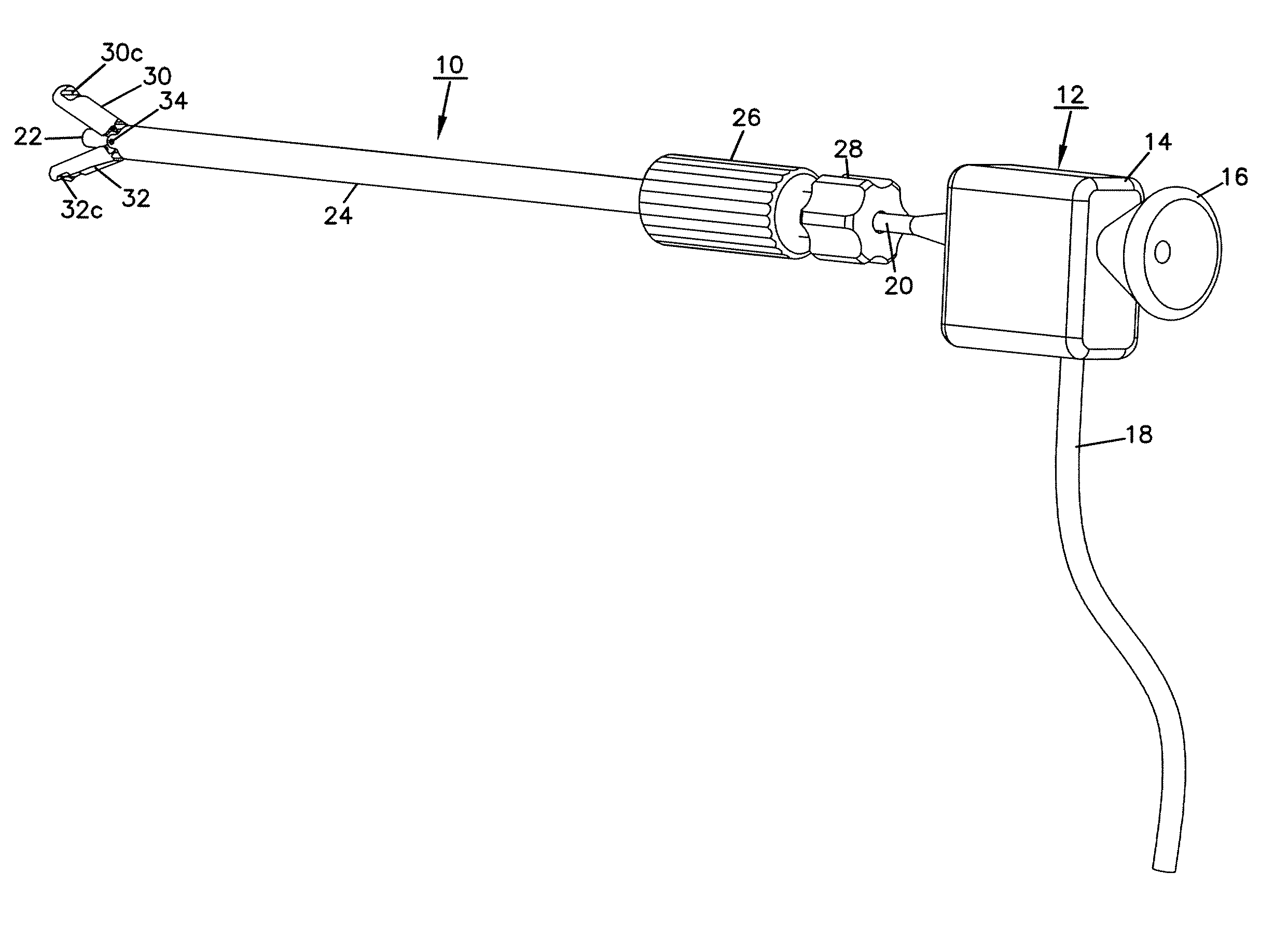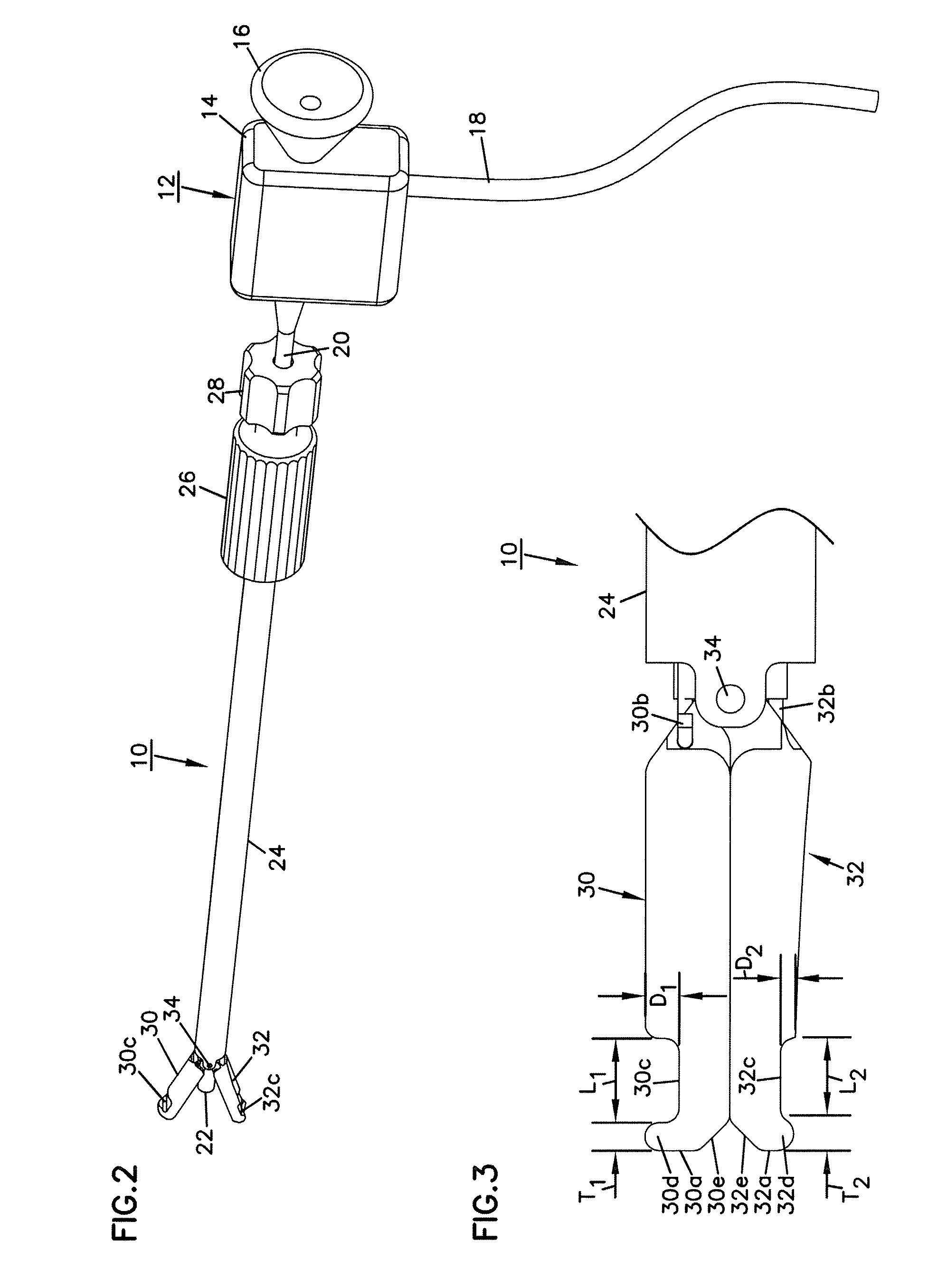Tools and methods for epicardial access
a tool and epicardial technology, applied in the field of tools and methods for epicardial access, can solve the problems of minimally invasive cardiac procedures, difficult surgical obstacles, and risk of injury to such structures
- Summary
- Abstract
- Description
- Claims
- Application Information
AI Technical Summary
Problems solved by technology
Method used
Image
Examples
Embodiment Construction
[0032] With reference now to the various drawing figures in which identical elements are numbered identically throughout, a description of a preferred embodiment of the present invention will now be provided.
[0033] While human anatomy may vary from patient to patient, the superior vena cava overlies and is spaced from the left atrium. A pulmonary artery passes beneath the superior vena cava and over the left atrium. The space defined between the superior vena cava, left atrium, and pulmonary artery is blocked by a pericardial reflection. The pericardial reflection is pericardial tissue extending from the left atrium to the underside of the superior vena cava. To obtain access to the epicardial surface of the heart surrounding the pulmonary veins, an incision must be made through the pericardial reflection.
[0034] In a thoracoscopic procedure, such an incision can made by forming two ports between the ribs of the patient on the right side. The first port provides for visualization t...
PUM
 Login to View More
Login to View More Abstract
Description
Claims
Application Information
 Login to View More
Login to View More - R&D
- Intellectual Property
- Life Sciences
- Materials
- Tech Scout
- Unparalleled Data Quality
- Higher Quality Content
- 60% Fewer Hallucinations
Browse by: Latest US Patents, China's latest patents, Technical Efficacy Thesaurus, Application Domain, Technology Topic, Popular Technical Reports.
© 2025 PatSnap. All rights reserved.Legal|Privacy policy|Modern Slavery Act Transparency Statement|Sitemap|About US| Contact US: help@patsnap.com



